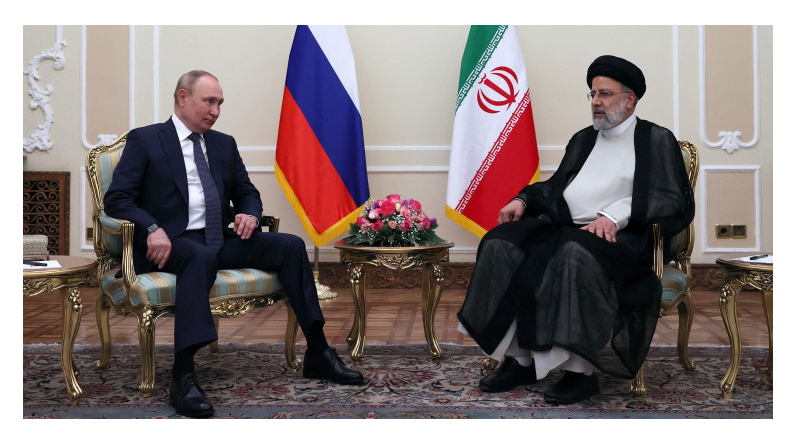Iran, Tehran – Despite Western sanctions, Iran and Russia have taken a major step towards linking their banking infrastructures, which was announced last week by the new governor of Iran’s central bank, Mohammadreza Farzin.
Although Russia has yet to respond, Iran’s CBI claims that their country’s national financial messaging service, SEPAM, is now linked to Russia’s Financial Messaging System of the Bank of Russia (SPFS).
SPFS aims to connect Russia with other major powers like China and India by functioning as the country’s equivalent to SWIFT (the Society for Worldwide Interbank Financial Telecommunication), the global financial messaging and transfer system. After receiving warnings that it would be kicked out of SWIFT for annexing Crimea in 2014, it began work on SPFS.
Following President Trump’s unilateral withdrawal from the 2015 nuclear agreement with world powers, the entire Iranian banking system has been cut off from SWIFT. Restoration of the nuclear agreement is still being discussed but talks have stalled.
However, Iran claims that all of its dozens of financial institutions can now connect with Russian banks, joining the more than 100 banks from 13 other primarily Eurasian countries that have access to SPFS.
Russia’s invasion of Ukraine a year ago prompted additional Western sanctions against Russia, and this announcement comes as ties between Tehran and Moscow have grown closer than ever. It has also been claimed that Iran supplied Russia with drones, which were delivered before Russia’s invasion of Ukraine in February 2022.
Iranian and Russian officials report that bilateral trade increased to over $4 billion last year, marking a new high for the relationship.
Last week, the Iranian government announced that Russia had invested $2.7 billion in the sanctioned Iranian economy in the year since Ebrahim Raisi took office as president in August 2021.
“There is political will”
The missing technical infrastructure appears to be in place for Iran and Russia to establish a stronger banking link, which would allow them to further expand their economic relations.
According to Hamidreza Azizi, a fellow at the German Institute for International and Security Affairs, Iran was more interested than Russia in structured banking cooperation prior to the Ukraine war and the sanctions it brought on Moscow.
According to what he told Al Jazeera, “in that sense, it seems that for the first time in the past decades, there is a strong will on both sides to enhance and institutionalise economic relations.” The political will exists, then.
However, according to Azizi, the Russian system will not become a viable alternative to SWIFT in the near future because it requires participation from or leadership from other large economies such as China and India.
Given that both nations are understandably wary of rushing into closer ties with the West, this is unlikely to happen any time soon. It also depends significantly on how the global rivalry between Washington and Beijing develops in the future,” he added.
Connecting Iran’s financial messaging system to Russia’s does not necessarily improve banking relations between the two countries. The Russian banks connected to SPFS still have to make the decision whether or not they want to work with Iranian customers and open correspondent accounts with Iranian banks.
Mohsen Karimi, CBI’s deputy for international affairs, was quoted last week by the state-linked Tasnim agency as saying, “It’s like a person is in the telephone network and can connect to anyone, but you can only say there’s communication when it actually happens.”
According to Al Jazeera, Azizi expressed doubt that any SPFS-affiliated banks outside of Russia would be willing to take on the additional risk associated with doing business with Iran.
Also Read : At the third annual Healthcare Digital Marketing Awards Edgewater Health took home the top prize
As he put it, “I even have doubts whether all Russian banks are equally interested in doing so,” because some of them still have interests in Europe and elsewhere that could be jeopardised if they worked with Tehran.
“Lack of Cash”
Iran and Russia are both working to reduce their economies’ reliance on the US dollar and the euro by increasing the volume of trade conducted in their respective national currencies.
NIMA, a state-run foreign exchange market for Iranian importers and exporters launched in 2018 and supervised by the central bank, added the Russian rouble to its basket of currencies offered in July of last year.
Former CBI governor Ali Salehabadi announced the launch of the rouble-rial market with a deal worth 2 million roubles (approximately $28,300), and he urged Iranian exporters to Russia to list their roubles on the market.
In an effort to stabilise the value of the rial, which has fallen to record lows in the wake of protests and continuing tensions with the West, NIMA now maintains a fixed rate that is artificially lower than the open market.
No information has been made public about the frequency of NIMA rial-rouble exchanges or the percentage of total bilateral trade that is currently settled in national currencies.
According to Esfandyar Batmanghelidj, CEO of the economic think tank Bourse & Bazaar Foundation, merely allowing banks to process cross-border payments will not lead to an automatic increase in trade, as Russian and Iranian merchants continue to face obstacles.
Foreign exchange market liquidity for roubles and rials remains low, he told Al Jazeera.
Russia and Iran have incompatible economies, as well. Competitors in the few markets that allow for engagement in sanctioned trade, as the two countries export and import the same goods.
In this vein, Batmanghelidj argued that the banking link announcement is noteworthy but not a “game-changer” in and of itself because it indicates Russian and Iranian policymakers are working to overcome some of the technical barriers to increased trade.

